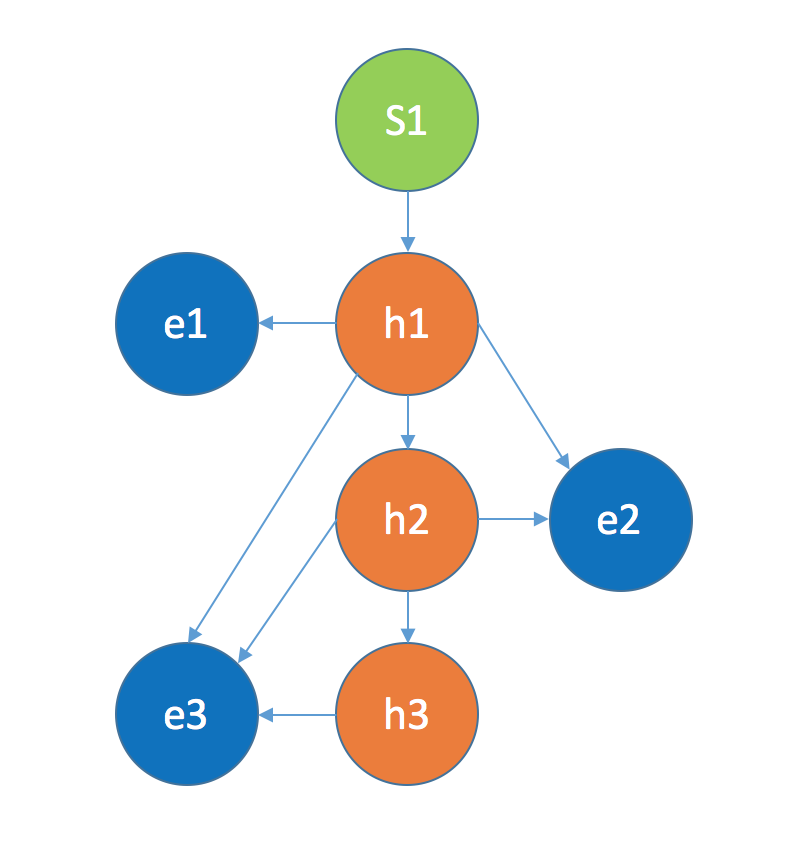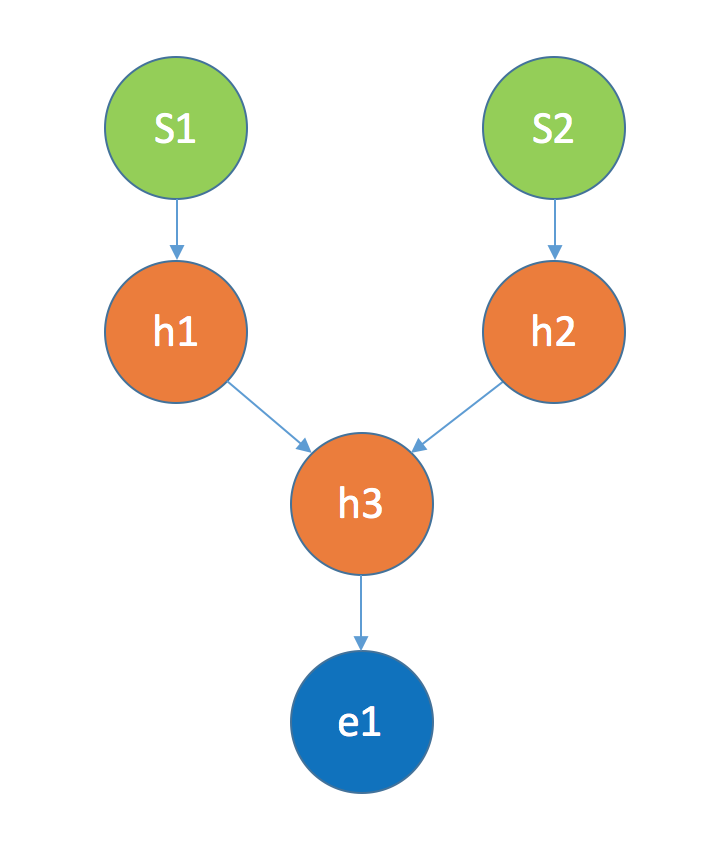TensorGraph is a framework for building any imaginable models based on TensorFlow.
As deep learning becomes more and more common and the architectures becoming more and more complicated, it seems that we need some easy to use framework to quickly build these models and that's what TensorGraph is designed for. It's a very simple and easy to use framework and allows you to build any imaginable models.
TensorGraph is targeted more at intermediate to advance users who feel keras or other packages is having too much restrictions on model building, and someone who don't want to rewrite the standard layers in tensorflow constantly, and someone who want to use some higher level layers to build models quickly without the restrictions of most other deep learning package.
First you need to install tensorflow
To install tensorgraph simply do via pip
sudo pip install tensorgraphor for bleeding edge version do
sudo pip install --upgrade git+https://github.com/hycis/TensorGraph.git@masteror simply clone and add to PYTHONPATH.
git clone https://github.com/hycis/TensorGraph.git
export PYTHONPATH=/path/to/TensorGraph:$PYTHONPATHin order for the install to persist via export PYTHONPATH. Add PYTHONPATH=/path/to/TensorGraph:$PYTHONPATH to your .bashrc for linux or
.bash_profile for mac. While this method works, you will have to ensure that
all the dependencies in setup.py are installed.
In TensorGraph, we defined three types of nodes
- StartNode : for inputs to the graph
- HiddenNode : for putting sequential layers inside
- EndNode : for getting outputs from the model
We put all the sequential layers into a HiddenNode, and connect the hidden nodes
together to build the architecture that you want. The graph always
starts with StartNode and ends with EndNode. The StartNode is where you place
your starting point, it can be a placeholder, a symbolic output from another graph,
or data output from tfrecords. EndNode is where you want to get an output from
the graph, where the output can be used to calculate loss or simply just a peek at the
outputs at that particular layer. Below shows an
example of building a tensor graph.
First define the StartNode for putting the input placeholder
y1_dim = 50
y2_dim = 100
batchsize = 32
learning_rate = 0.01
y1 = tf.placeholder('float32', [None, y1_dim])
y2 = tf.placeholder('float32', [None, y2_dim])
s1 = StartNode(input_vars=[y1])
s2 = StartNode(input_vars=[y2])Then define the HiddenNode for putting the sequential layers in each HiddenNode
h1 = HiddenNode(prev=[s1, s2],
input_merge_mode=Concat(),
layers=[Linear(y1_dim+y2_dim, y2_dim), RELU()])
h2 = HiddenNode(prev=[s2],
layers=[Linear(y2_dim, y2_dim), RELU()])
h3 = HiddenNode(prev=[h1, h2],
input_merge_mode=Sum(),
layers=[Linear(y2_dim, y1_dim), RELU()])Then define the EndNode. EndNode is used to back-trace the graph to connect
the nodes together.
e1 = EndNode(prev=[h3])
e2 = EndNode(prev=[h2])Finally build the graph by putting StartNodes and EndNodes into Graph
graph = Graph(start=[s1, s2], end=[e1, e2])Run train forward propagation to get symbolic output from train mode. The number
of outputs from graph.train_fprop is the same as the number of EndNodes put
into Graph
o1, o2 = graph.train_fprop()Finally build an optimizer to optimize the objective function
o1_mse = tf.reduce_mean((y1 - o1)**2)
o2_mse = tf.reduce_mean((y2 - o2)**2)
mse = o1_mse + o2_mse
optimizer = tf.train.AdamOptimizer(learning_rate).minimize(mse)Below is another example for building a more powerful hierachical softmax whereby the lower hierachical softmax layer can be conditioned on all the upper hierachical softmax layers.
## params
x_dim = 50
component_dim = 100
batchsize = 32
learning_rate = 0.01
x_ph = tf.placeholder('float32', [None, x_dim])
# the three hierachical level
y1_ph = tf.placeholder('float32', [None, component_dim])
y2_ph = tf.placeholder('float32', [None, component_dim])
y3_ph = tf.placeholder('float32', [None, component_dim])
# define the graph model structure
start = StartNode(input_vars=[x_ph])
h1 = HiddenNode(prev=[start], layers=[Linear(x_dim, component_dim), Softmax()])
h2 = HiddenNode(prev=[h1], layers=[Linear(component_dim, component_dim), Softmax()])
h3 = HiddenNode(prev=[h2], layers=[Linear(component_dim, component_dim), Softmax()])
e1 = EndNode(prev=[h1], input_merge_mode=Sum())
e2 = EndNode(prev=[h1, h2], input_merge_mode=Sum())
e3 = EndNode(prev=[h1, h2, h3], input_merge_mode=Sum())
graph = Graph(start=[start], end=[e1, e2, e3])
o1, o2, o3 = graph.train_fprop()
o1_mse = tf.reduce_mean((y1_ph - o1)**2)
o2_mse = tf.reduce_mean((y2_ph - o2)**2)
o3_mse = tf.reduce_mean((y3_ph - o3)**2)
mse = o1_mse + o2_mse + o3_mse
optimizer = tf.train.AdamOptimizer(learning_rate).minimize(mse)Below is an example on transfer learning with bi-modality inputs and merge at the middle layer with shared representation, in fact, TensorGraph can be used to build any number of modalities for transfer learning.
## params
x1_dim = 50
x2_dim = 100
shared_dim = 200
y_dim = 100
batchsize = 32
learning_rate = 0.01
x1_ph = tf.placeholder('float32', [None, x1_dim])
x2_ph = tf.placeholder('float32', [None, x2_dim])
y_ph = tf.placeholder('float32', [None, y_dim])
# define the graph model structure
s1 = StartNode(input_vars=[x1_ph])
s2 = StartNode(input_vars=[x2_ph])
h1 = HiddenNode(prev=[s1], layers=[Linear(x1_dim, shared_dim), RELU()])
h2 = HiddenNode(prev=[s2], layers=[Linear(x2_dim, shared_dim), RELU()])
h3 = HiddenNode(prev=[h1,h2], input_merge_mode=Sum(),
layers=[Linear(shared_dim, y_dim), Softmax()])
e1 = EndNode(prev=[h3])
graph = Graph(start=[s1, s2], end=[e1])
o1, = graph.train_fprop()
mse = tf.reduce_mean((y_ph - o1)**2)
optimizer = tf.train.AdamOptimizer(learning_rate).minimize(mse)

